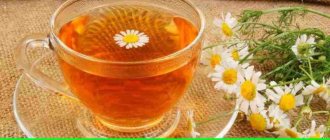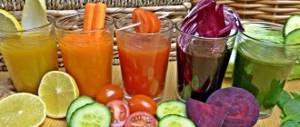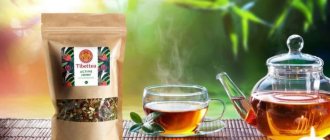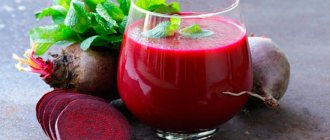Home > Traditional medicine > Cleansing blood vessels with medicinal herbs.
To cleanse blood vessels from cholesterol plaques and to prevent atherosclerosis, infusions and tinctures of medicinal herbs have long been successfully used in folk medicine.
Since the condition of the blood vessels depends on the condition of the liver, it is first recommended to take a collection of choleretic herbs for 5-7 days.
The simplest composition of the collection used for this purpose consists of peppermint leaves and sandy immortelle flowers.
Collection 1.
Mint leaves, immortelle - 3 tbsp each, dill seeds - 1 tbsp.
Infusion: 1 tbsp. steam the collection with 2 cups of boiling water. Leave for 30-40 minutes.
Take warm half an hour before meals.
The main advantages of the variety
An important characteristic of Marquette grapes is that they are resistant to extreme winter changes. The uncovered variety survives at temperatures of –38C. It is profitable to grow it in areas where the weather brings “surprises”. The new variety opens up the possibility of its cultivation in the northern part of the country.
The culture has excellent immunity to diseases, in particular fungal ones. Problems such as oidium, mildew and black leg practically do not “disturb” grapes. Phylloxera lesions were observed extremely rarely. The plant tolerates chemicals well.
The structure of the bush with vertical shoots makes the work of the winegrower easier.
Marquette grapes are considered a mid-season hybrid variety.
Advantages of the Marquette grape variety:
- resistance to frost in the autumn-winter period;
- the ability not to use shelter (except for the Northern regions);
- high productivity;
- good drought tolerance;
- excellent immunity to diseases and pests;
- good transportability;
- increased keeping quality;
- storage duration;
- good taste characteristics for wine cultivation.
The Marquette grape has one drawback - the buds are not resistant to frost. Even if you did not cover the vine for the winter, you will have to do it in the spring (during the period of bud growth).
Names of herbs for cleaning blood vessels and their main properties
To effectively rid blood vessels of cholesterol and other harmful accumulations, the following herbs are most often used.
- Immortelle. It contains useful resins, dyes and tannins, flavonoids, essential oils, manganese, potassium and calcium salts. The plant relieves acute pain, helps with atherosclerosis, diabetes and obesity, and has a choleretic, expectorant and diuretic effect on the body.
Immortelle flowers clean not only blood vessels, but also the liver
- Mint. This herb is rightly called a natural antibiotic, which has a mild effect and does not cause any harm to humans. The use of mint decoctions and tinctures helps stop the growth of many fungi and bacteria, including Staphylococcus aureus and E. coli; promotes vasodilation, significantly increases the activity of the circulatory system and eliminates symptoms of depression and insomnia.
Peppermint tea is an effective cleanser and soothing agent.
- Dill seeds work as an effective laxative and choleretic agent, have a beneficial effect on the liver, fight kidney inflammation, normalize blood pressure and efficiently clean blood vessels.
Dill seeds are a natural blood vessel cleanser.
- Dandelion (roots and leaves). This flower is famous for the presence of vitamins B2, C, carotene, iron, calcium, phosphorus, manganese and nicotinic acid. Dandelion tincture regulates metabolic processes in the body, can seriously reduce cholesterol levels and reduces the risk of heart failure and hypertension.
Dandelion helps lower cholesterol levels
- Red clover. Refers to the main natural sources of magnesium, calcium and copper. In addition, it contains sulfur, potassium, iron and vitamins A, groups B and E. It perfectly cleanses blood vessels and lymph, helps fight colds and many stomach diseases.
Red clover cleanses lymph
These herbs do not need supplementation. You can brew them yourself and drink them daily, having previously agreed on the dosage with your doctor.
External description of Marquette grapes
The complex grape variety does not shine with its beauty, since its breeding was pursued for technical purposes. But since the grape culture itself is attractive, it looks great on a personal plot.
One of the interesting things about grapes is that they grow vertically. This idea of the breeders allows the sun to do its job. Direct light exposure not only affects the quality and taste of berries, but also has a positive effect on their color. The clusters are not densely scattered and are slightly hidden behind the foliage.
Medium-sized brushes have a canonical shape. Dark berries with a protective coating fit tightly to their base. Their color is very rich, blue or black-violet. The berries are round, and the overall bunch looks like regular wine grapes. Confirmation of this can be seen in the photo of Marquette grapes, which are attached to the article.
Golden mustache
Golden mustache is a real home doctor. The medicinal properties of this plant are determined by the “golden” ratio of the various beneficial substances included in its composition. Among them are biologically active compounds - flavonoids.
The flavonoids quercetin and kaempferol have a vascular strengthening effect. Reduce blood pressure, increase elasticity and reduce the permeability of blood vessels and capillaries.
The flavonoid catechin also helps strengthen and cleanse the walls of blood vessels.
The presence of B vitamins (B5 and B3) in the golden mustache helps regulate metabolism and normalize cholesterol balance.
Attention! Products containing golden mustache are not recommended for use by smokers.
Landing
Marquette grapes can be propagated in different ways - cuttings, seedlings, layering. This can be done both in spring and autumn, without fear of winter frosts. If cold weather is ahead, then young shoots must be gradually hardened off and not left open in the garden. This takes approximately 3 years.
Recommended timing
When to Plant Marquette Grapes:
- when rooting annual seedlings last year, planting is carried out in the spring (from late April to early May);
- green shoots are planted after May 20, until the end of June;
- autumn terms - from late September to early October.
To obtain a decent grape harvest, you need to choose the appropriate location and soil. Main parameters:
- The best option is the south side, where the plant will be provided with sufficient light and heat.
- The preferred soil is loam, sandy loam. This is due to the fact that such soils are loose and have excellent throughput rates.
- Groundwater should be located no closer than 2.5 meters from the surface. If the groundwater occurrence is closer, you will have to create a drainage system.
It is preferable to purchase seedlings in specialized stores, since the Marquette grape variety is a hybrid, but you can also obtain planting material at home.
Which shoots are ideal for planting:
- minimum number of roots – 4 pieces;
- growth: length – 24-26 mm, thickness – 4-6 mm;
- base thickness – 2-4 mm;
- The seedling must be free of damage, mold and the like.
Before planting grapes, renew the shoots. To do this, lightly cut off the edges of the root system with a knife, then soak in a clay mash for 24 hours (the proportions of clay and mullein are 2:1). After 24 hours, transplant the seedlings into open ground.
After preparing the planting material, the seedlings are planted in open soil. There is a special technology that increases the survival rate of the plant.
Step-by-step instruction:
- In the area for planting cuttings, dig a trench 1.2-1.5 m wide. The depth is 90-100 cm.
- Place broken brick, crushed stone or gravel at the bottom to create a drainage system. The layer should not exceed 20 cm.
- Next, add soil mixed with a small amount of sand (ratio 3:1).
- To facilitate the watering process, install a special system consisting of plastic pipes. Place them on 2 sides of the trench so that the upper part is above the ground.
- Plant seedlings at a distance of 1 m, covering them with soil and compacting them. Backfilling with soil is carried out up to 2 holes.
- Fill the bushes with plenty of settled water.
- Place mulch on top (straw, leaves, pine branches, sawdust, etc.). This will maintain the required level of humidity.
Marquette grapes prefer loamy and sandy soils. You should pay attention to the depth of the groundwater. It is necessary that their depth is 2.5 meters, and the planting hole is 70-80 cm.
A layer of humus is placed at the bottom of the hole. Grapes should be planted in such a way that their root part remains on the surface. Only the root is dug into the ground. Then the grapes are watered and a peg is placed next to it, to which unstable shoots are tied.
If the soil does not meet the requirements of the plant, then creating drainage is the best option for planting grapes.
What to take for cardiovascular diseases
Medicinal herbs used to treat heart diseases provide a gentle effect on the body.
Side effects when used wisely are minimal. In the treatment of heart disease, as well as in order to alleviate their symptoms, it is recommended to take medications from the following herbs:
- Those suffering from arrhythmia are helped by calendula, hawthorn, smokeweed, valerian, motherwort, and lemon balm.
- For tachycardia, take hawthorn, lavender, passionflower, mint, and motherwort. With bradycardia, mint and immortelle, pine shoots, and lily of the valley help.
- Heart failure is treated with rose hips, hawthorn, fennel, dill and lemon balm.
- For angina pectoris - motherwort, astragalus, valerian, hawthorn, rose hips.
- If a person has suffered a myocardial infarction, ginkgo biloba, Caucasian dioscorea, Japanese sophora, and gray jaundice are recommended for restorative treatment.
- For ischemia - eleutherococcus, horsetail, lemon balm, chamomile.
- If your heart hurts, yarrow and hawthorn, lemon balm and lily of the valley, moritz, mint, and valerian are suitable.
- Cardiac edema is treated with parsley, calendula, viburnum lingonberry, rosehip, nettle, St. John's wort, burdock, and flax seeds.
In the process of preparing infusions, decoctions and herbal juices, you must strictly adhere to the prescribed dosage and carefully follow the recipe.
Grape care
To guarantee a good harvest, care and disease prevention are important. The following recommendations will help achieve this goal:
- The description of the Marquette grape variety mentioned that on its vertical shoots the buds are open to sunlight, so choosing a suitable location is an important factor for planting the crop. Since grapes are demanding of light and heat, the site should be open, but at the same time protected from spring storms. For example, you can plant a row of grapes along the fence so that the light comes from the south side. And if you plant Marquette in high beds or on elevated slopes, this will protect the roots from getting wet and cold.
- In spring, it is necessary to take measures to protect the seedlings. In order to preserve the future harvest, farmers cover the grapes. Practice has shown that it is better to use non-woven covering material or regular film.
- Once a year, preferably in the spring, the plant should be treated with fungicides to protect the foliage from phylloxera. A chemical-resistant bush will be healthy. In addition, this procedure will allow him to grow and develop better.
- Watering is carried out regularly, until the grapes bloom. Then they should be stopped so as not to cause the flowering tassels to fall off.
- Timely loosening of the soil and cleaning of weeds will allow the root system to “breathe” better.
- The development of a new variety was aimed at making the winegrower's work easier. This is true. The structure of the Marquette grape bush allows for high-quality pruning and shaping of the plant. When performing these actions, 35-40 eyes are left.
In order for the grapes to bear fruit, certain care is required, which consists of the following:
- Removal of the upper roots. The procedure is carried out after the formation of 3 full-fledged shoots. Examine them carefully, selecting the strongest and most powerful. Remove the remaining shoots. To do this, dig a 20-centimeter hole around the shoot, inside which trim the weak elements near the trunk.
- Vine staking is required as Marquette grapes grow vertically. To do this, build a structure in the initial stages. Along the trench, install a trellis system (supports on which wire or strong rope is stretched). The height of the first wire string is 30-35 cm, stretch another 2-3 strings above it after 30-40 cm.
- Foliage thinning is carried out in the summer. The variety is distinguished by the thickening of the leaf part, which covers the bunches of grapes. But since Marquette grapes love a lot of light and the sun’s rays are necessary for fruit ripening, the foliage that shades the clusters is cut off.
- If more than 2 clusters form on one vine, it is necessary to cut off the excess ones. That is, there should be no more than 2 bunches left, due to which the berries will be large.
- Loosening of the soil around the tree trunk circles is carried out after watering. Dry cracking of the soil should not be allowed.
Watering and fertilizing
Marquette grapes do not require a lot of moisture, as the variety is considered drought-resistant, but watering is necessary during the period of bud formation, before flowering and after the leaves have fallen. At this time, water the bushes 2-3 times a month; during other periods, add water once every 30 days.
Fertilizer feeding is carried out along with watering. For this purpose, mineral and organic fertilizers are used. Apply them once a month, but add compost every next 2 years. Suitable:
- Potassium salts are applied in dry form to the root zone. To do this, dig a groove, pour in the product, and cover with soil. For 1 bush you need 40-50 g of potassium.
- Ammonium nitrate consists of potassium and nitrogen. It is applied to the soil according to the previous example.
- Ammophos contains phosphorus and nitrogen compounds. It is introduced in a proportion of up to 10 g per plant trunk.
- Nitrophoska has a nitrogen-phosphorus-potassium composition. For one bush you need 15-100 g.
- Kemira-Lux has a balanced composition (potassium, phosphorus, nitrogen, zinc, boron, selenium and other minerals). For 10 liters of water, 20 g is enough (for one bush).
- Chicken droppings or manure. A bucket of water requires 0.5 kg of organic matter. After combining the components, the mixture is left to ferment for 2 weeks. Next, add 1 tbsp to a bucket of water. l. slurry from litter or 2 tbsp. l. liquids from manure. For young grapes, it is enough to apply 1 bucket of solution; for an adult plant, 20 liters are needed.
Trimming the vine
Branch breaking begins when buds open. How does this happen:
- break off the barren shoots that grow at the very base;
- remove the shoots that appear in one eye;
- trim off any weakened branches;
- shorten the crowns of the fruiting vine (you need to leave 4-5 leaves after the brush).
Around August, trim the top of the vine again, which will direct all the nutrients to the berry clusters.
Pinching shoots
Carry out pinching along with trimming the top. There are rules for pinching:
- Remove the tops of the shoots along with underdeveloped foliage during the period of intensive growth.
- Pinch only fruiting shoots.
- Do not pinch loose elements.
- Carry out the procedure after rain or during cool weather.
- Do not pinch shoots growing on the replacement rosary.
- The optimal time for the manipulation is the last days of June.
Marquette grapes are very tender until 3 years of age, so they are susceptible to freezing. To avoid any hassle with wrapping the shoots in the future, the vine is gradually hardened immediately after planting. They do this as follows:
- Wrap the bush with plastic film or non-woven material, but remove it from cover during the daytime.
- In autumn, cover the plant for 2-3 years and place the vines on boards.
- After a couple of years, the shelter is made thinner than in the previous year and at a later date. This continues until the grapes are 5 years old.
The harvest time directly depends on climatic and weather conditions, but on average it is from mid-August to mid-September.
Collection rules:
- there should be no dew on the plant, so evening is considered the best time;
- cut the grapes together with the tassels with a special tool (secateurs);
- After this, carefully place the bunches in a container and transfer them indoors for further inspection.
How to properly store Marquette grapes:
- before storing for long-term storage, inspect the bunches for the presence of rotten and damaged berries (they are cut off);
- storage temperature ranges from 3 to 10 degrees Celsius;
- the room must be equipped with a ventilation system or ventilated frequently;
- the humidity level should not exceed 80%;
- It is not recommended to stack grapes on top of each other for long-term preservation - preference should be given to hanging bunches.
Reproduction methods
It is better to purchase hybrid varieties in specialized stores. If you decide to harvest seedlings yourself, then this can be done by cuttings (cuttings are harvested in summer and autumn when pruning).
Soak the seedlings in water for 24 hours, etch with a solution of copper sulfate, and dry thoroughly. And only after this, place the cuttings for winter storage in the cellar. Plant the plant in the spring after the root system has sprouted.
Preparing for winter
Preparing the Marquette grape variety for wintering is carried out as follows:
- remove all foliage;
- prune vines that have already produced fruit;
- cut off the superficial roots;
- separate unripe shoots;
- water the plant;
- if shelter is required, cover and wrap the grapes.
Licorice
The composition of licorice is unique. These are about 30 flavonoids, more than a dozen different chemical elements, essential oils, pectins, monosaccharides, disaccharides, tannins and a number of other substances beneficial to the human body.
The underground part is used for medicinal purposes. It is harvested in March or November. A 4-year-old plant is considered the most useful. The roots remain effective for 10 years.
Licorice enhances the body's protective functions and helps resist the negative effects of the environment. Has antidepressant properties. Helps with chronic fatigue and normalizes the activity of the nervous system.
Contraindications
- high blood pressure
- heart failure
- venous insufficiency
- pregnancy
Reference! Long-term use of licorice root may cause swelling.
Reviews
Marquette is a new promising grape variety that combines high resistance to frost and disease with good quality wines obtained from it. The crossing was carried out in 1989, one of the parents MH 1094 is a complex interspecific hybrid, which has vitis riparia, vitis vinifera and other types of grapes in its pedigree, Rava 262 also has a long pedigree, one of the parents of which is Pinot noir. Marquette was selected from seedlings in 1994. A patent for this variety was received in 2005.
Early-mid ripening grapes. The clusters are small to medium in size, the berries are medium-sized, round, dark blue, with a pruin coating. The sugar accumulation of the variety is high, on average 26% (I had over 30%), acidity is above average - pH factor 2.9. To reduce acidity in wine, it is recommended to carry out malolactic fermentation (malolactic fermentation). If the bunches are kept on the bushes, the acidity decreases slightly. Productivity - 100 c/ha.
The Marquette grape variety has very high frost resistance - the vine can withstand temperatures down to -38 ° C, while the variety is highly resistant to fungal diseases (mildew, oidium and black rot), and in some years minimal treatments with fungicides are required. There is evidence that in such “mildew” years there is a slight incidence of this disease.
According to American experts, Marquette begins a new era of hybrid grape varieties that are highly resistant to frost and disease and produce wines at the level of European varieties. The experimental wines from Marquette are of excellent quality, better than most hybrid varieties today.
Tasters noted an attractive deep red color, aromas of cherry, black pepper, spices, sometimes with tones of blackberry, plum, tobacco, leather, and a moderate tannin structure. Suitable for the production of dessert and semi-sweet wines; due to their high sugar content, table wines are high-alcohol (14% or higher), blending with less sugary varieties is possible.
Early data from Marquette wine aging in oak barrels is encouraging, increasing the complexity of the wine, giving it more body and structure. The grape variety is promising for the Upper Midwest and Eastern USA (Michigan, New York, New England), as well as for Quebec, Canada. Marquette may also have commercial potential in Northern and Eastern Europe.
My friends Svetlana and Albert mention wines from this variety in a story about their trip to wineries in the northern United States.
From my observations of the variety, I can say that it is unpretentious; in my vineyard it was never affected by diseases, even when there were diseased bushes around it. True, I always follow the minimum set of grape treatments.
Here's what I learned from an informal conversation with Peter Hemstad, co-author of this variety: 1. Wine tasting. Peter provided three types of wine from this variety: sweet, semi-sweet and fortified. Dry, he says, don’t even try to make it - it will be a big disappointment. However, I must note that the wines he provided are of very good quality.
Marquette affected by mildew. Photo by colleague Ivo Kotrle from Moravia (Czech Republic).
3. A couple of signals about cracking berries. He claims that he did not notice cracking of berries in the experimental plots, and very much doubts the correct viticultural approach in the plots from which these signals came. But these signals are there, and he needs to talk about it.4. Recommends growing with vertical shoots.
But, he says, there is no particular emphasis on studying the best shape of the bush (it requires additional funds and distracts from the main task - selection). He says that perhaps Marquette will feel great on a trellis with free-hanging shoots.5. Produces two clusters per shoot = does not require special attention when thinning the clusters.
On average, he says, 101 grams/bunch. Recommends a yield of 4 tons per acre (10 t/ha).6. Ripens earlier than Frontignac (about a week). And its acidity is much lower than that of the mentioned variety.7. A huge disadvantage of the variety that makes me stop considering Marquette as a potential variety for my region is its early bud break. Those.
The wines from Marquette that I have tasted are clearly superior to many of the hybrid varieties, primarily American and French-American. True, I made wine from it in its pure form only once, but I almost never had a chance to try it. But that's a different story... ?
More information about this variety and recommendations for growing it and making wine can be found on Marquette’s personal page, on the website of its creator, the University of Minnesota.
I will be happy to listen and publish reviews from colleagues about this (and other) varieties presented on my website.
The Marquette variety is intended for wine production, but many grape lovers prefer to enjoy these fruits. The variety is not considered too demanding, but when growing, you need to adhere to agrotechnical standards, which will allow you to get a good harvest.
Judging by the reviews of Marquette grapes, one can find confirmation of what the breeders promised. It is truly frost resistant. Much emphasis in reviews is placed on the excellent taste of wine made from Marquette grapes. Some people consider it a problem if the plant grows too much.
Rose hip
The high content of flavonoids and ascorbic acid makes rose hips an indispensable natural remedy for diseases of the circulatory system. These substances protect the body from free radicals.
The anti-sclerotic properties of rose hips have a beneficial effect on angina pectoris, transient cerebrovascular accidents, ischemic encephalopathy, and post-infarction conditions.
Taking rose hips improves blood microcirculation, strengthens the walls of blood vessels, regulates carbohydrate metabolism, promotes the production of hemoglobin, and removes “bad” cholesterol.
Contraindications:
- thrombophlebitis;
- pancreatitis;
- ulcer of the duodenum and stomach;
- diabetes;
- chronic gastritis with high acidity;
- tendency to allergies.
Reference! Long-term continuous use may cause various adverse reactions. They are individual for each person.
Traditional medicine methods
There are traditional medicine recipes that will also help get rid of plaques on the face. But they can only be used after consulting a doctor. A decoction of rose hips and immortelle is considered very useful. It is prepared like this:
- mix three parts of immortelle with four parts of rose hips;
- add one part of mint;
- Place the mixture in a thermos and pour boiling water at the rate of one tablespoon per glass of liquid.
The medicine should be infused for three to four hours, then strained and drunk 150 ml four times a day on an empty stomach. The course of treatment lasts from two to three weeks, then a pause is made and after two months the course is repeated.
Yarrow removes cholesterol plaques very well. The infusion is prepared in the same way: a tablespoon of raw material is poured with a glass of boiling water and left until it cools, then the infusion is filtered. They take it according to the same scheme.
You can also lubricate the formations with mercury ointment, or replace it with zinc-ichthyol. The product is applied only to the plaques themselves for two weeks, morning and evening. By the time the course of treatment is completed, the formations should disappear.
To understand why there is an imbalance between beneficial and harmful lipids, it is worth delving a little into the biochemical processes of regulation of fat metabolism. So, cholesterol is a substance from the class of fatty alcohols, necessary for the synthesis of cell membranes, steroid hormones and the normal functioning of the nervous system.
When cholesterol enters the bloodstream, it binds to special carrier proteins – apolipoproteins. Depending on how saturated the transport protein molecules are with fat, they are divided into:
- HDL is “good” high-density cholesterol, which cleans blood vessels from atherosclerotic plaques and transports it to liver cells for further utilization;
- LDL is “bad” low-density cholesterol, containing a large number of fat molecules and having atherogenic properties.
Essentially, these are small encapsulated flat or protruding accumulations of fat above the surface of the skin. Cholesterol plaques are benign tumor-like neoplasms and are prone to growth, albeit slowly. In this case, the plaques are absolutely painless, soft to the touch, not fused with the surrounding tissues, i.e., they have some mobility.
This external manifestation of impaired lipid metabolism in the body occurs in every fifth inhabitant of the planet over 55 years of age. Female representatives are more susceptible to the formation of cholesterol plaques. Since the second half of the twentieth century, experts have noted a significant increase in the incidence of atherosclerosis, including its external manifestations.
The child's skin is very sensitive, so drugs are chosen carefully. The following medications are prescribed:
- Non-hormonal agents – Gistan, Skin-Cap. Eliminates urticaria, itching from insect bites, atopic dermatitis.
- Ointments and creams with a regenerating effect - Bepanten, La-Cri. Eliminate irritation and accelerate wound healing.
- Hormonal ointments – Elokom, Advant. The drugs relieve inflammation and skin itching and are prescribed when non-hormonal drugs are ineffective.
To improve the therapeutic effect, children are prescribed a diet that excludes allergic foods. Additionally, physiotherapy is used:
- electrosleep – reduces pain sensitivity, stimulates blood flow;
- magnetotherapy – improves blood circulation and oxygen metabolism;
- phototherapy – helps reduce the symptoms of psoriasis;
- electrophoresis – delivers drugs into the bloodstream.
Methods for getting rid of plaques and papules on the skin do not differ from the schemes used to treat children. Adults are prescribed ointments and tablets with a higher concentration of active substances. Additionally used:
- Antidepressants – Afobazol, Fluoxetine. Restores the nervous system and calms.
- Broad spectrum antibiotics – Doxycycline, Vibramycin. Kill bacteria.
To enhance the therapeutic effect of medications, the doctor will recommend lotions, compresses and herbal decoctions. The following recipes have proven themselves in the treatment of plaques:
- Mix birch tar and Vaseline in a ratio of 1 to 10. Apply the ointment to the affected areas of the body twice a day for a week.
- Pour 6 tbsp. l. dried celandine 3 liters of water. Bring the mixture to a boil, reduce heat and simmer for 20 minutes. Infuse the decoction for 2-4 hours. Add the entire volume to a bath of warm water and soak in it for 30-40 minutes. The decoction helps against psoriasis. The course of treatment is 12 sessions.
- Squeeze the juice of one lemon. Dilute with water in a ratio of 1 to 10. Wipe your face and décolleté area with the solution once a day. The product helps against age spots.
The need for a cleansing course
An indication for cleansing is the occurrence of a number of diseases and conditions that negatively affect the composition of the blood. These are factors such as:
- diseases of vital organs - kidneys, liver, pancreas, heart, blood vessels, digestive, respiratory and circulatory systems;
- the presence of an infection in the body caused by viruses or pathogenic bacteria;
- predisposition to allergies;
- increased blood cholesterol levels;
- consequences of uncontrolled use of medications;
- alcohol abuse and smoking addiction;
- negative impact of household chemicals and cosmetics;
- the impact of unfavorable environmental conditions;
- consumption of poor quality food and water;
- parasite infection.
The listed factors become the basis for carrying out cleaning procedures. However, the decision about the advisability of their use should not be made independently, but after a conversation with a doctor.
Alarming symptoms
The need for blood cleansing can be determined by its characteristic signs and symptoms. Among them, the most specific are:
- chronic fatigue;
- depression;
- sleep disturbance;
- skin diseases caused by the presence of staphylococcus in the blood;
- susceptibility to colds;
- frequent herpes rashes;
- instability of blood pressure.
Possible results
Blood purification with herbs gives positive results in cell rejuvenation and slowing down the aging process of the body. In addition, herbal medicine helps:
- strengthening the immune status;
- normalization of blood counts;
- stabilization of the functioning of organs and systems;
- improving the condition of the skin and hair, strengthening the nail plates;
- weight correction;
- increasing male potency.
Despite all the positive effects of the procedure on the body, you can use herbs that cleanse the blood only on the recommendation of a doctor and after a thorough examination.
You should not make the decision to carry out cleaning on your own . This can lead to an undesirable result, that is, a worsening of the condition.
Treatment of hypertension
The problem of high blood pressure is familiar to many people. And this disease affects more and more young people every year.
The best herb to combat hypertension is Astragalus wooliflora. Birch leaves can be added to it as a diuretic component. You can improve the taste with oregano and lemon balm. Clover will help cleanse blood vessels. And meadowsweet acts as a mild sedative.
- To prepare a medicinal collection, all herbs must be taken in equal proportions and mixed well.
- Then pour 15 g of the mixture into a thermos.
- Brew 470 ml of water.
- Divide this amount into several doses and drink throughout the day.
Important! If the pressure has stabilized, you should not suddenly stop taking the decoction. The dose should be gradually reduced.
Signs and symptoms
At the initial stage of the disease, the patient is worried about weakness, increased fatigue, frequent dizziness and headache. Negative symptoms are attributed to fatigue. At later stages, the symptoms of the disease depend on the location of the plaque:
- thoracic aorta – hypertension, shortness of breath, heart pain;
- neck and head area – memory impairment, speech and hearing impairment, in severe cases dementia develops;
- lower extremities – pain when walking, intermittent claudication, formation of trophic ulcers;
- heart zone (coronary artery) – tachycardia, hyperhidrosis of the feet and hands, fainting;
- abdominal region – abdominal pain, flatulence, stool disorders.
As the disease progresses, the intensity of symptoms increases and irreversible pathological changes occur. The simultaneous manifestation of several provoking factors accelerates the formation of cholesterol plaques and contributes to the loss of elasticity of the great vessels, which leads to gradual sclerosis.
Who needs it
The opinion that problems with blood vessels occur only in older people is erroneous.
We take care of our appearance - we wash our face, wash our hair and body, brush our teeth 2 times a day, and this is considered the norm.
While the internal organs are forced to cope with the accumulated debris on their own. But the body does not always have enough resources for this.
Therefore, by the age of 30, people begin to get tired quickly, become lethargic and lazy, and complain of decreased performance, headaches, and high blood pressure.
But at this age life is just beginning.
Periodic cleaning of blood vessels with folk remedies will return the body to its previous shape and prevent many dangerous diseases (coronary heart disease, vascular angiopathy, hypertension, atherosclerosis).
Contraindications
Despite the recognized effectiveness of herbal remedies, they should be used with caution. There are contraindications for the use of some herbs:
- Immortelle helps increase blood pressure, so you should not use it for a long time if you have hypertension. It is used with caution for thrombophlebitis.
- Valerian root can depress the functioning of the digestive system and often causes problems with the heart.
- St. John's wort - if consumed excessively, can cause harm to the body, since it is a poisonous plant.
- Preparations based on lily of the valley cannot be used for acute myocardium, endocarditis, or cardiosclerosis.
- Chinese lemongrass should not be consumed if you have high blood pressure; it is extremely undesirable if you have problems with the cardiovascular system.
- Onion tincture – not suitable if you have kidney failure.
- Products containing fern should not be taken for pathological conditions or heart failure.
To avoid the development of complications and side effects, treatment of cardiovascular diseases using herbal infusions and decoctions must be carried out under the supervision of a physician.
Contraindications are identified separately for each medicinal plant and patient. General contraindications for all herbs are individual intolerance, a tendency to allergic reactions, pregnancy and lactation, chronic diseases of the gastrointestinal tract, kidneys and urinary system.
Anti-atherosclerotic therapy using medicinal herbs is an accessible, effective, safe method of combating pathologies of the vascular wall and impaired cerebral blood flow.
Some herbal remedies containing garlic are not advisable for patients with digestive problems. Garlic irritates the gastric mucosa, adding, in addition to cholesterol plaques, problems with the gastrointestinal tract.
Other herbal preparations have a diuretic effect. Such medications are contraindicated for people with diseases of the excretory system.
If there are already formed blood clots in the vessels, then there will be no benefit from such therapy, only harm. Therefore, in any case, tests and examinations, as well as consultation with a doctor, are required.
Features of cleaning for different types of diabetes
A feature of vascular problems in diabetes is the irrational distribution of blood. The main load falls on the veins of the lower extremities, so patients are prescribed vasodilators. It is necessary to take medications that normalize blood circulation. In diabetes, damage to vascular tissue occurs faster. At the initial stage, it is possible to get by with medications:
- nootropics;
- neuroprotectors;
- blood thinning drugs;
- vasodilators;
- antioxidants.
With the help of medications it is necessary to reduce glucose levels and normalize metabolic processes. Insulin is used for this purpose. Folk remedies for diabetics to clean and strengthen blood vessels in the body:
- Jerusalem artichoke;
- blueberry;
- flax-seed;
- mint and lemon balm;
- Linden;
- chamomile;
- calendula.
Diabetics should adhere to a balanced diet, which is based on:
- cellulose;
- calcium;
- alimentary fiber;
- Omega 3 and 6.
When diabetes begins, plant decoctions will help remove cholesterol plaques, strengthen, and improve the elasticity of vascular walls. The effect will be temporary, cholesterol will continue to settle on the walls. It is necessary to regularly adhere to the diet prescribed by the doctor and carry out preventive cleaning.
In severe forms of diabetes, it is not possible to remove cholesterol using traditional and pharmacological methods; surgical intervention is necessary.
Review of the best herbs for blood purification
Medicinal plants used for cleansing have the ability not only to remove toxins, reduce cholesterol in the blood, but also strengthen the immune system. Their advantage over pharmaceuticals is their relative safety of use. However, the use of home recipes is beneficial only if the ratios of ingredients and treatment regimen are strictly followed.
The list of blood purifying herbs is quite diverse. Traditional healers recommend the use of:
- immortelle,
- yarrow,
- burdock,
- cinquefoil,
- strings,
- milk thistle,
- St. John's wort,
- nettle,
- dandelion,
- wormwood,
- echinacea,
- successions.
The listed herbs can cleanse the blood, using them individually or in various collections. Below are the most popular and effective recipes.
Nettle tincture
The medicinal properties of the plant have been known for a long time. Medicines made from this herb cleanse the blood, thin it, remove toxins, and strengthen the immune system. The plant also has a diuretic effect and helps burn excess glucose.
You can prepare infusions, decoctions, teas. The most effective remedy is nettle tincture. The cooking algorithm is as follows:
- Fill a dark glass bowl halfway with dry or fresh leaves of the plant.
- Fill the container to the brim with vodka and place in a dark place.
- Leave for 10 days.
The tincture should be taken 1 tsp. after meals twice a day. The course of treatment is 30 days.
Treatment of hypotension
Hypotension often affects middle-aged people. Low blood pressure may indicate the presence of any infections in the body. And also be a consequence of mental and physical fatigue.
Comprehensive treatment should begin with daily moderate physical activity and proper rest. Herbal infusions will help blood vessels become healthy faster.
Collection 1
- liquorice root;
- series;
- Panaceria fluffy;
- buckwheat.
These herbs should be taken in 12 g quantities. Add to them 6 g of ground valerian root. For 1200 ml of boiled chilled water you will need 55 g of raw materials. Let the broth boil slowly. Then leave it in a thermos overnight. The mixture should be taken before bedtime for 32 days.
Collection 2
- Oregano (6 parts), issol officinalis, lemon balm, rue, yarrow (4 parts each).
- Mix everything and take 35 g of the mixture and 950 ml of boiling water.
- Place everything in a tightly sealed container and leave for at least 7 hours.
- Take 175 ml three times a day half an hour before each meal.
In addition to teas, you can make herbal teas with the addition of St. John's wort, tartar, and immortelle.
Important! Tea with the addition of 3 g of ground ginger raises blood pressure well.
What to pay attention to
When using herbal preparations, the effect of which has a positive effect on the heart and blood vessels, one must remember that plants can have a strong effect on the body. If consumed uncontrolled, the consequences can be very unpleasant.
Before using herbal medicines for treatment, you should visit a doctor to establish an accurate diagnosis. If the doctor approves the idea of treatment with herbal remedies, they should be used under the supervision of a specialist. If there is a deterioration in cardiac activity, the use of the drug must be stopped immediately and the doctor must be notified.











